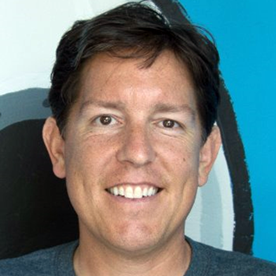The Internet of Things and HR: It's Time to Connect the Dots

This article was updated on August 8, 2018.
At first glance, the Internet of Things and HR do not seem to naturally mesh. However, HR leaders must begin to consider the impact the IoT will have on their organizations now and in the future, and what HR must do to prepare for it.
The IoT has the potential to change the way organizations operate, and at the same time it raises questions about how HR should support the talent needs of organizations.
What Is the Internet of Things?
According to Harvard Business Review (HBR), "The phrase 'internet of things' has arisen to reflect the growing number of smart, connected products and highlight the new opportunities they can represent." Applications are widespread and can include anything from fitness activity trackers, watches and smartphones to thermostats, appliances and drones. With parameters as broad as this, HR leaders will need to start addressing how the IoT will impact their talent management and workforce-planning strategies in the years to come.
Fitness Trackers and Employee Wellness
To combat the rising cost of health care, global organizations are implementing a wide range of employee wellness programs, which are not only improving employee health, but also bottom lines, as noted by Inc.com. If employee wellness is a strategic talent-management lever, where does the Internet of Things come in?
One way for HR leaders to simplify the concept of the IoT is wearable devices, specifically fitness trackers. A fitness tracker monitors and tracks a person's fitness level. According to Bloomberg, Target offers Fitbits, a popular fitness tracker, to its 335,000 employees in an effort to help employees improve health and reduce health care costs. Target is betting these wearable devices will serve as an incentive for people to improve their health in a preventive rather than reactive way.
According to health care consultant Optum's annual study, Wellness in the Workplace, 79 percent of mid-market employers think it's extremely important to establish health ownership among their employees. And 22 percent of those companies are using fitness trackers to help employees stay healthy.
Wearable devices are just one of many examples of how the Internet of Things and HR will continue to intersect as the technology proliferates over time.
Privacy and Security Issues
Before an HR team implements any IoT strategy, HR leaders should consider issues of privacy and security. HR teams and employees must understand where their data is being stored, how it is being used, who has access to the data, what its purpose is and how secure the data is.
In early 2015, the Federal Trade Commission (FTC) released a report on the privacy and security risks of the Internet of Things and provided guidelines that organizations can utilize to "enhance and protect" consumer and employee privacy and security. The FTC specifically recommended that organizations educate employees about the importance of security and ensure that security is managed appropriately in the organization.
So at the most basic level, HR leaders will have to lead the development of guidelines and policies to address IoT privacy and security issues before even considering any organizational interconnectivity.
Changing Strategic Workforce Planning
CompTIA forecasts there will be 50 billion things connected to the internet by 2020. A trend this widespread is bound to impact how global organizations operate. Organizations will need to develop and evolve their existing roles and to create new, as-yet-unimagined roles to deal with this new technology.
HBR reports that the IoT will eventually impact the entirety of an organization's operations, from finance teams that will need to change traditional planning, budgeting and forecasting processes to operations teams that will need to deal with potential new vendor relationships, customer support challenges, inventory requirements and unfamiliar laws and regulations. Fitts concludes that it will fall to HR to cultivate the "human capabilities needed to capture the IoT opportunity."
Although the potential skill needs are still a relatively unknown commodity, HR leaders need to consider the multitude of possibilities the IoT affords as they devise and implement future strategic workforce-planning processes if they intend to keep their organizations at the forefront of their industry.



